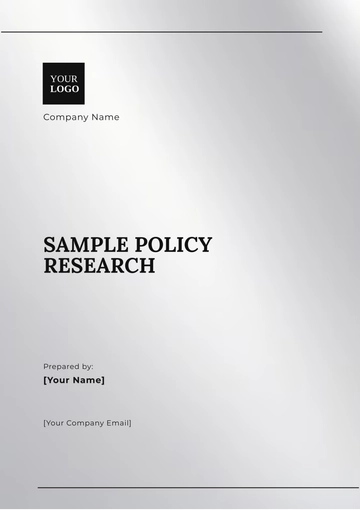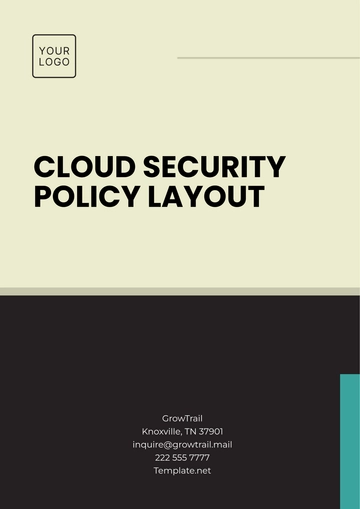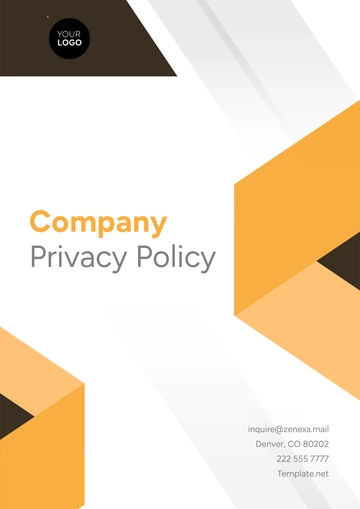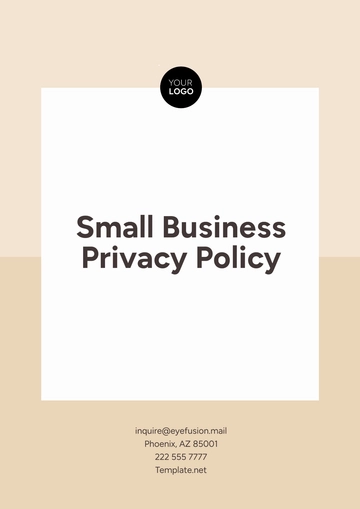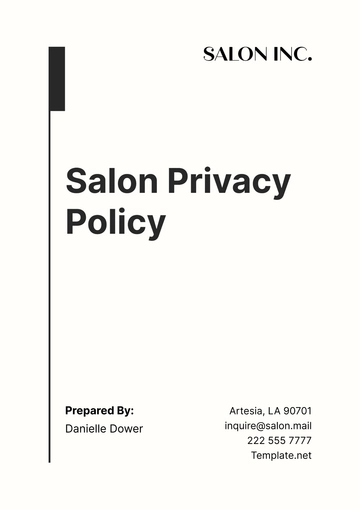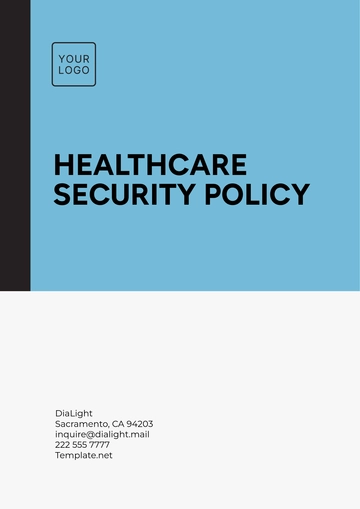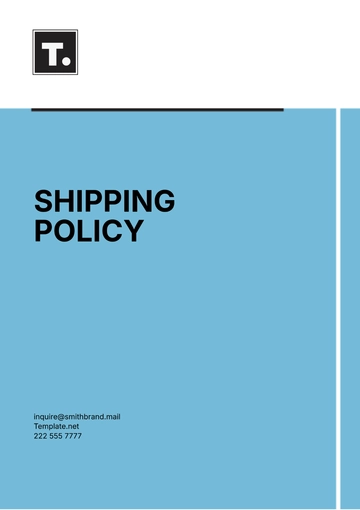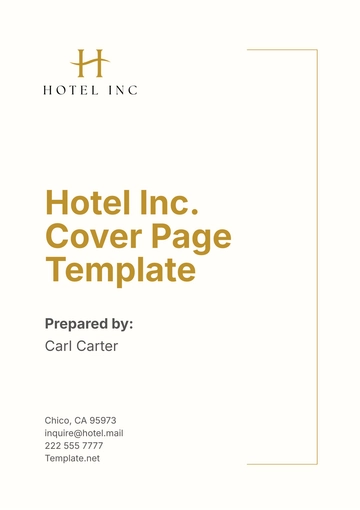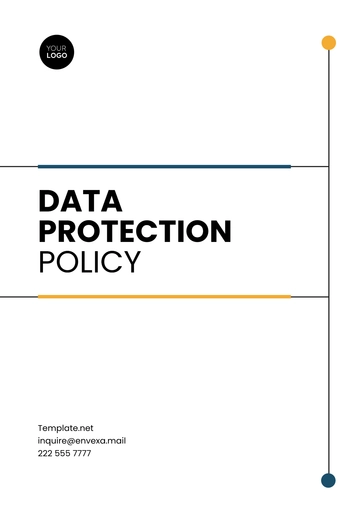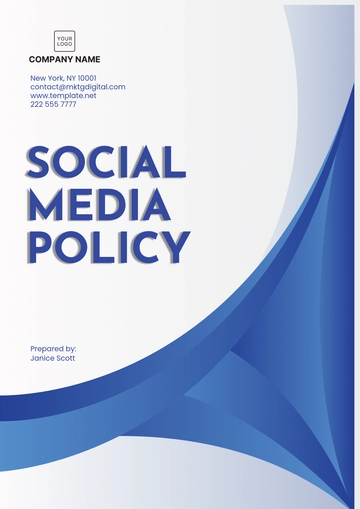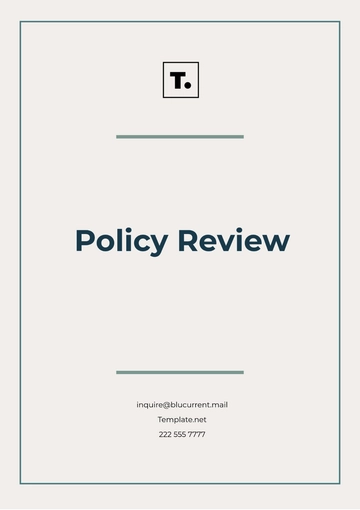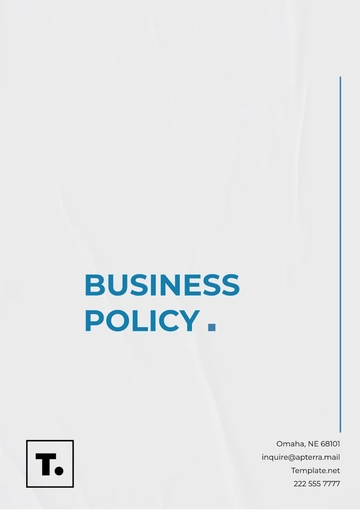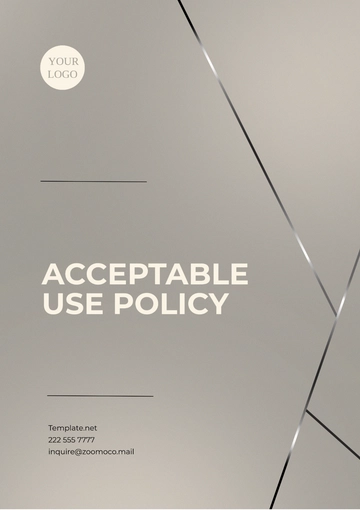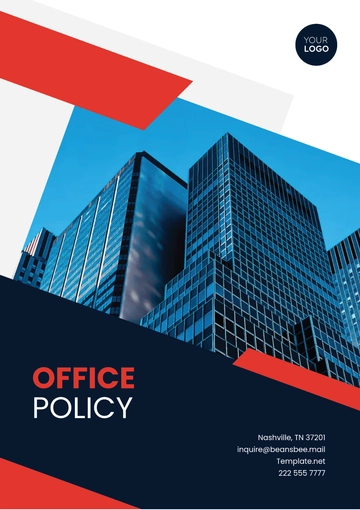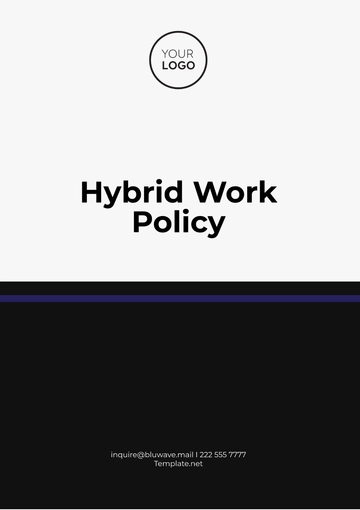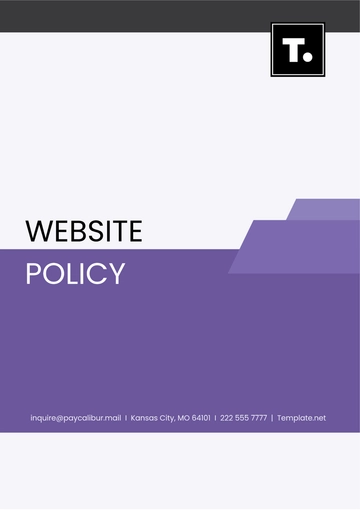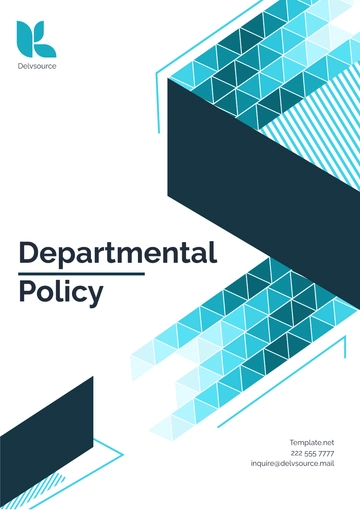Free Cleaning Services Dress Code Policy
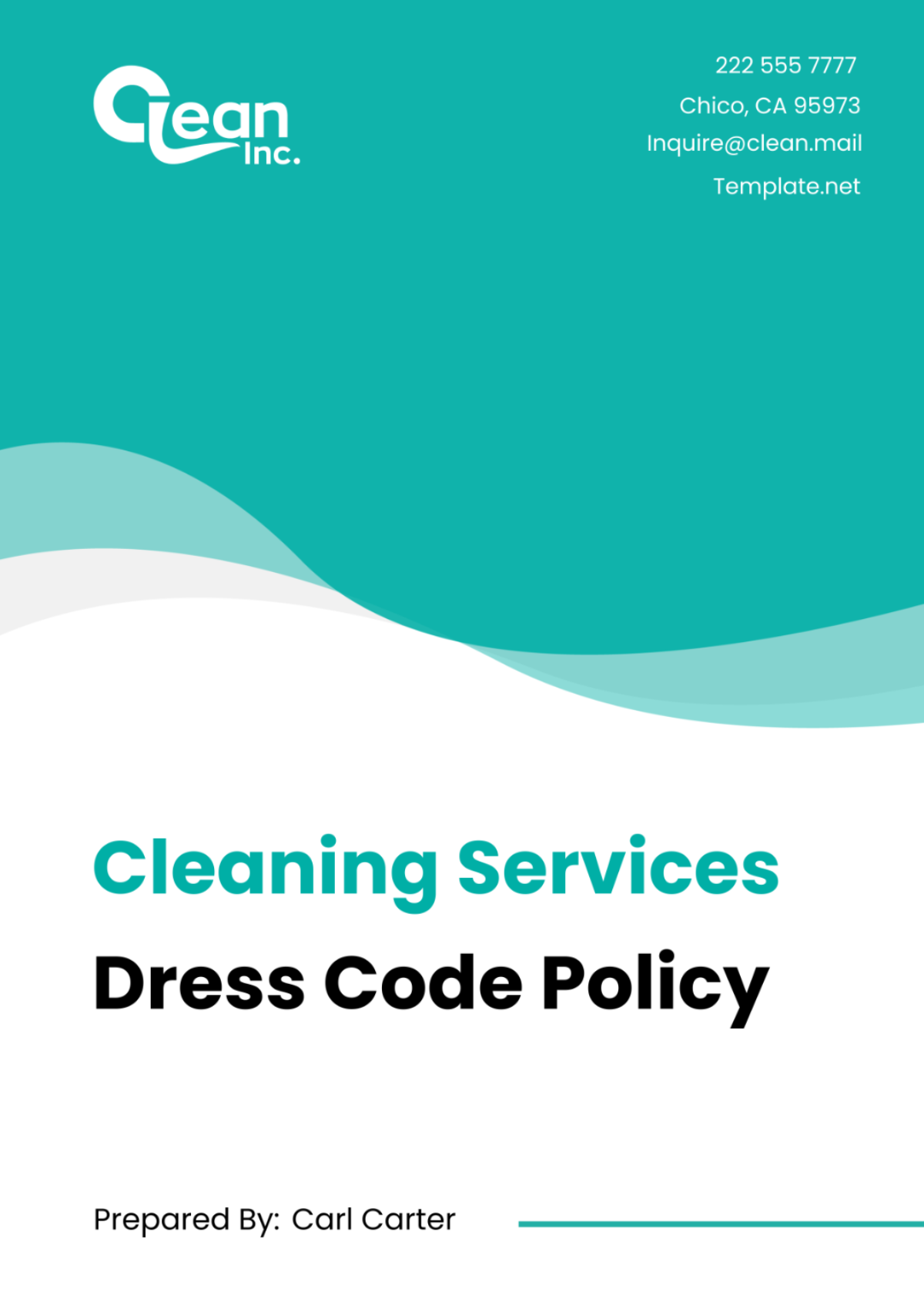
I. Introduction
In our commitment to excellence and safety in providing cleaning services, we establish this Dress Code Policy to outline the expectations for all employees regarding work attire. This policy ensures that our team presents a professional image to clients while adhering to safety and health standards essential in our line of work. Compliance with this dress code is considered an integral part of our operations, reflecting our dedication to quality, safety, and professionalism.
II. General Dress Code Guidelines
A. Expectations
Our expectations for employee attire are designed to maintain a professional appearance and ensure safety on the job. Employees are expected to:
Wear the designated uniform during all work hours.
Keep their attire clean, neat, and well-maintained.
Ensure that clothing is appropriate in size and fit to avoid safety hazards.
Wear closed-toe, non-slip footwear to prevent accidents.
B. Prohibited Attire
To maintain professionalism and safety, certain types of attire are not permitted while on duty. These include, but are not limited to:
Open-toe shoes or sandals.
Loose jewelry or accessories that could become entangled in equipment.
Shorts, skirts, or any clothing that does not provide adequate protection.
Clothing with offensive or inappropriate logos, images, or text.
C. Special Considerations
We recognize and respect individuality among our team members; however, to maintain a uniform appearance and ensure safety, we have guidelines regarding tattoos, piercings, and hair:
Tattoos: Visible tattoos should be non-offensive and not detract from a professional appearance. Tattoos that may be considered offensive or inappropriate must be covered during work hours.
Piercings: For safety reasons, only small, stud earrings are permitted. All other facial or body piercings should be removed or covered while on duty.
Hair: Hair should be kept neat, clean, and, if long, tied back to prevent interference with work duties and ensure safety around equipment.
III. Uniform Requirements
A. Description of the Uniform
Our uniform consists of a navy blue polo shirt, khaki trousers, and a navy blue apron with the company logo prominently displayed on the front. The required pieces for the uniform are designed to offer comfort, functionality, and a professional appearance. Each employee is expected to wear all three pieces of the uniform while on duty. The uniform materials are selected for durability and ease of maintenance, ensuring that employees can keep their attire clean and presentable.
B. How and When to Wear Uniform Correctly
The uniform should be worn during all work hours, from the start of the shift until its completion. The polo shirt should be tucked into the khaki trousers, and the apron should be securely fastened. Uniforms should be free of wrinkles, tears, or excessive wear. Employees are expected to maintain a neat and professional appearance throughout their shifts, adhering to the personal hygiene and grooming standards outlined in this policy.
C. Company Uniforms vs. Employee Attire
We provide each employee with two sets of uniforms upon their initial hire, ensuring they have a sufficient rotation for cleanliness. It is the employee's responsibility to maintain the uniform, including regular washing and ironing. Guidelines for uniform and employee-provided attire include:
Replacements are available upon request due to normal wear and tear.
Employees are responsible for providing their own footwear, adhering to the safety and appearance standards set forth in this policy.
Additional or replacement uniforms due to damage beyond normal wear and tear or loss may be subject to a fee.
IV. Safety Gear and Equipment
Ensuring the safety of our employees while on duty is a top priority, which is why specific safety gear and equipment must be used as part of the uniform. The proper use of safety gear not only protects our employees but also upholds our commitment to maintaining a safe work environment. Below is a table outlining the required safety gear, when to use it, and how to properly utilize it:
Safety Gear | When to Use | How to Use |
Gloves | Handling chemicals or cleaning surfaces | Select the appropriate type for the chemical being used; ensure a snug fit. |
Non-slip shoes | During all work hours | Shoes must be closed-toe and provide adequate grip on wet and dry surfaces. |
Safety goggles | Using chemicals or machines that could splash | Ensure goggles fit securely and provide clear visibility without fogging. |
Aprons or coveralls | When handling messy or hazardous substances | Wear over the uniform to protect against spills and stains. |
Employees are required to inspect their safety gear before each use to ensure it is in good condition and replace or report any damaged items to management immediately. Proper maintenance and storage of safety gear are essential to its effectiveness and longevity.
V. Personal Hygiene
Personal hygiene is paramount in our industry, not only for the health and safety of our employees but also to maintain the professional image we promise to our clients. Employees are expected to adhere to high standards of personal cleanliness to prevent contamination and ensure a safe working environment. Our expectations include:
Employees must ensure they are clean before starting their shift.
Uniforms should be washed regularly and kept in good condition.
Employees must wash their hands thoroughly with soap and water before and after each cleaning task, after using the restroom, and before eating.
To avoid discomfort or allergic reactions in colleagues or clients, employees should refrain from using strong perfumes or colognes.
Hair must be clean, neatly tied back if long, and kept away from the face.
VI. Compliance with Health Regulations
Compliance with health regulations is critical to our operations, ensuring the safety and well-being of both our employees and clients. Relevant U.S. regulations that we adhere to include:
Occupational Safety and Health Administration (OSHA) standards
Environmental Protection Agency (EPA) regulations
Centers for Disease Control and Prevention (CDC) guidelines
To comply, we ensure that all cleaning procedures meet or exceed these standards, that safety data sheets for all chemicals are accessible, and that employees are trained on the appropriate use of personal protective equipment (PPE).
VII. Non-Compliance Consequences
Non-compliance with our Dress Code Policy can have serious repercussions, affecting not only the individual's safety but also our company's reputation and operational efficiency. The consequences based on the frequency of non-compliance are tabulated below:
Frequency | Consequence |
First Occurrence | Verbal warning and reminder of dress code policies |
Second Occurrence | Written warning and retraining on dress code policies |
Third Occurrence | Disciplinary action, up to and including termination |
VIII. Policy Review and Update
This Dress Code Policy is subject to review and updates annually to ensure it remains relevant and effective in meeting both our company standards and regulatory requirements. Changes to the policy will be communicated to all employees in a timely manner, and new versions of the policy will include the date of the last update to ensure clarity on the most current expectations and guidelines.
- 100% Customizable, free editor
- Access 1 Million+ Templates, photo’s & graphics
- Download or share as a template
- Click and replace photos, graphics, text, backgrounds
- Resize, crop, AI write & more
- Access advanced editor
Define professional appearance standards with the Cleaning Services Dress Code Policy Template from Template.net. This editable and customizable guide establishes clear dress code guidelines for your cleaning staff. Editable in our AI Editor tool, it ensures your team presents a uniform and professional image to clients, enhancing your service's reputation and client trust.
You may also like
- HR Policy
- Restaurant Policy
- Company Policy
- Accounting Policies and Procedures
- Website Policy
- Privacy Policy
- Safety Policy
- School Policy
- IT and Software Policy
- Law Firm Policy
- Construction Policy
- Interior Design Policy
- Travel Agency Policy
- Education Academic Policy
- Security Policy
- Real Estate Policy
- Expense Policy
- Software Policy
